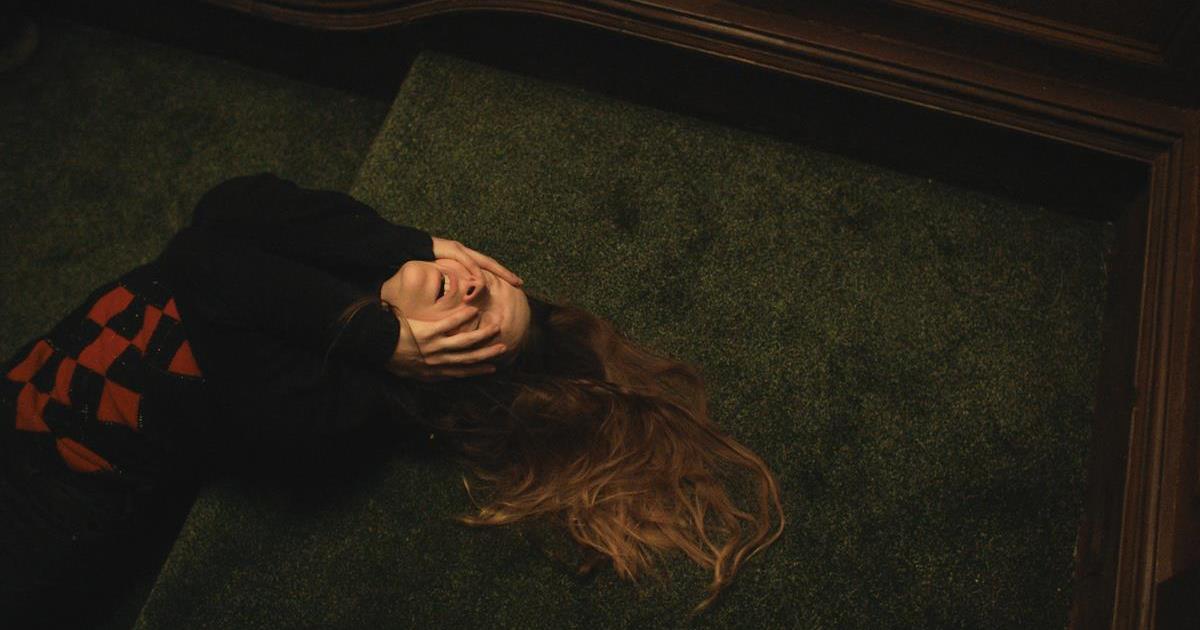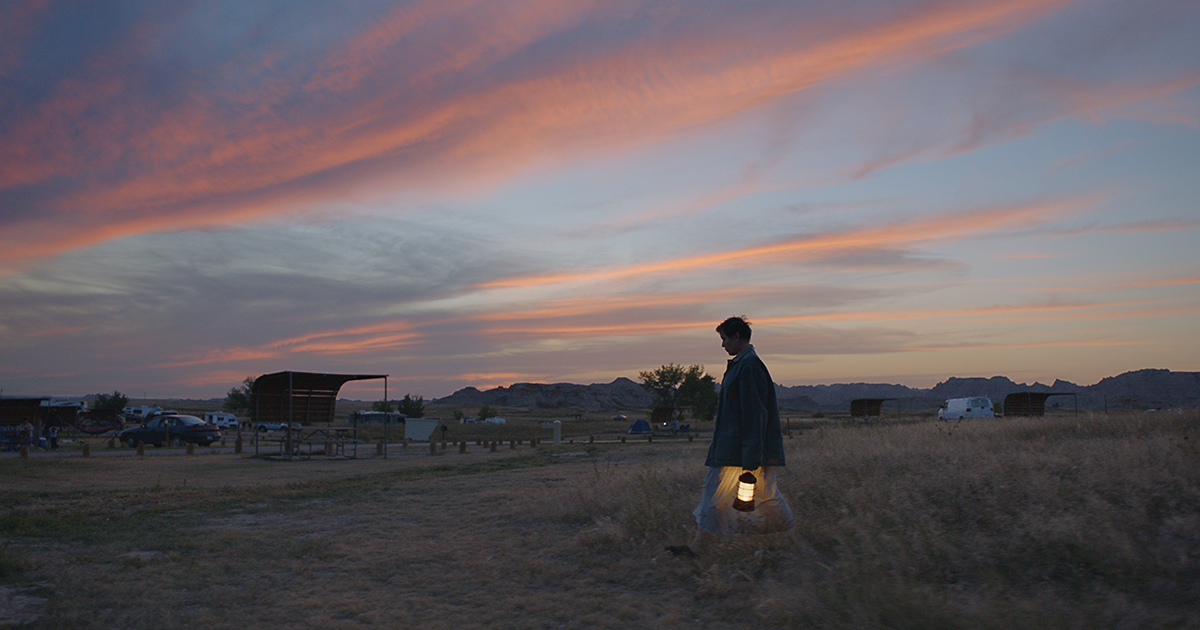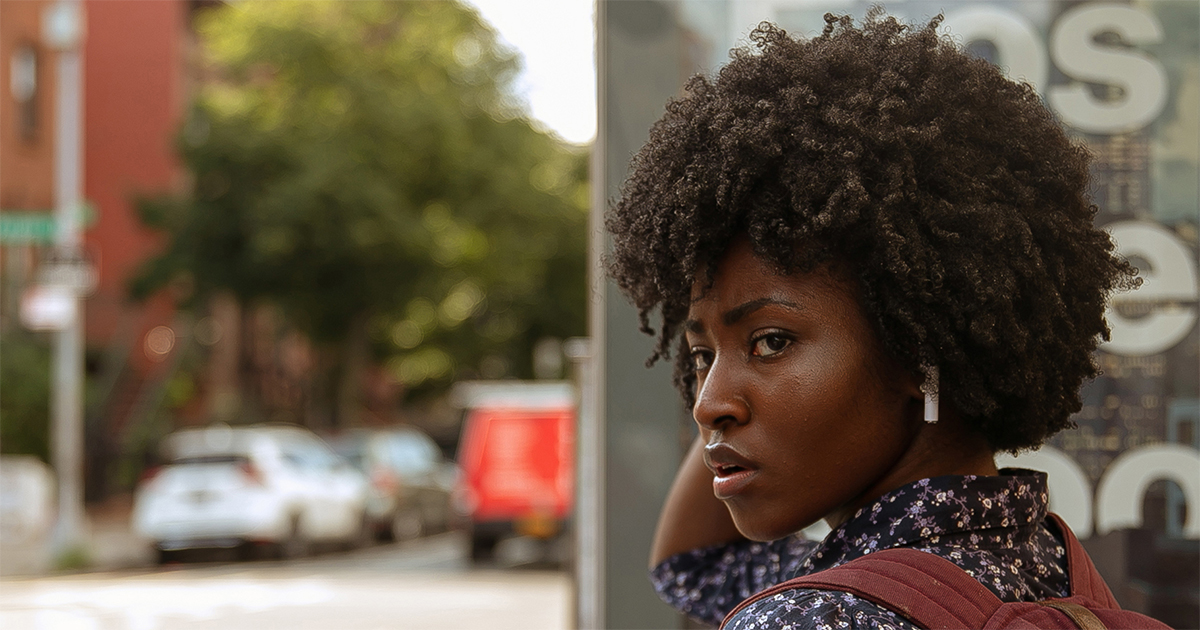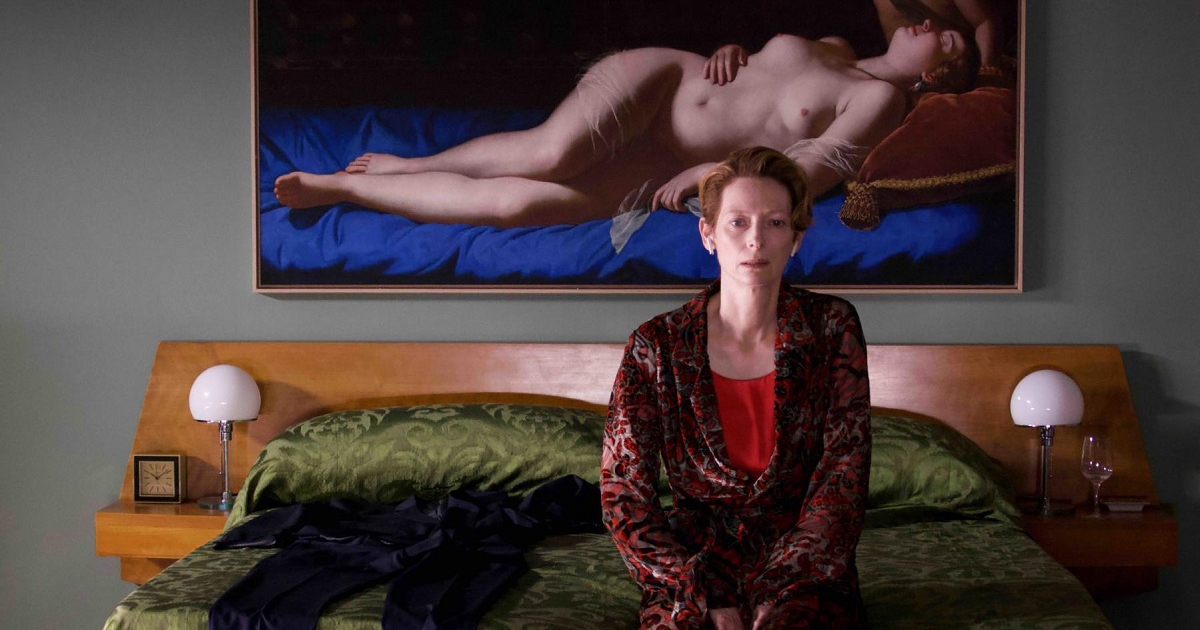
Now playing in select theaters via Sony Pictures Classics, Pedro Almodóvar’s first English-language film, The Human Voice, stars Tilda Swinton as a woman traumatized by the end of a relationship. In the film, which was recently shortlisted for an Oscar for best live action short, Swinton plays a nameless woman who passes time as she watches over the suitcases of her former lover — who is supposed to come pick them up, but never arrives — and a restless dog called Dash who doesn’t understand that his master has abandoned him. Over the course of 30 minutes, Swinton runs through a gamut of emotions ranging from despair and fury to exhilaration and triumph, all while isolated in a luxurious apartment that also just happens to be a stage set.
Almodóvar turned to two of his longtime collaborators for the stylish short film, which was photographed by cinematographer José Luis Alcaine and features music by composer Alberto Iglesias. “Once again, the lighting was in the hands of José Luis Alcaine, the last great maestro of light left in Spanish cinema,” Almodóvar notes. “All the favorite colors of my palette are represented in the set, but after eight films, Alcaine is the one who best knows my preference for saturation and vibrant colors, my nostalgia for Technicolor.”
“Almodóvar’s sensory filmmaking and Tilda Swinton’s bracing lead performance make the 30-minute short film feel as emotionally fulfilling as any feature film,” Zack Sharf writes in IndieWire.
“I always considered this adaptation as an experiment, a whim in which I would show what, in theater, is called the fourth wall, and in cinema would be to show the part behind, that is, the wooden structure that holds up the walls of the realistic set, the material reality of what is fictional,” the director says in a statement:
“The reality of this woman is the pain, the solitude, the darkness in which she lives. I have tried to make all this obvious, moving and eloquent through the (sublime) performance by Tilda Swinton, showing very early on that her house is a construction inside a cinema sound stage. By showing it on all sides, coming out of the realistic decor and making use of all the space in the studio, I have enlarged, as it were, the size of the setting where the monologue is performed. I have mixed the cinematic and the theatrical, combining their essences.”
READ MORE: ‘The Human Voice’ Trailer: Tilda Swinton Burns the Screen Down in Almodóvar’s Short Film (IndieWire)
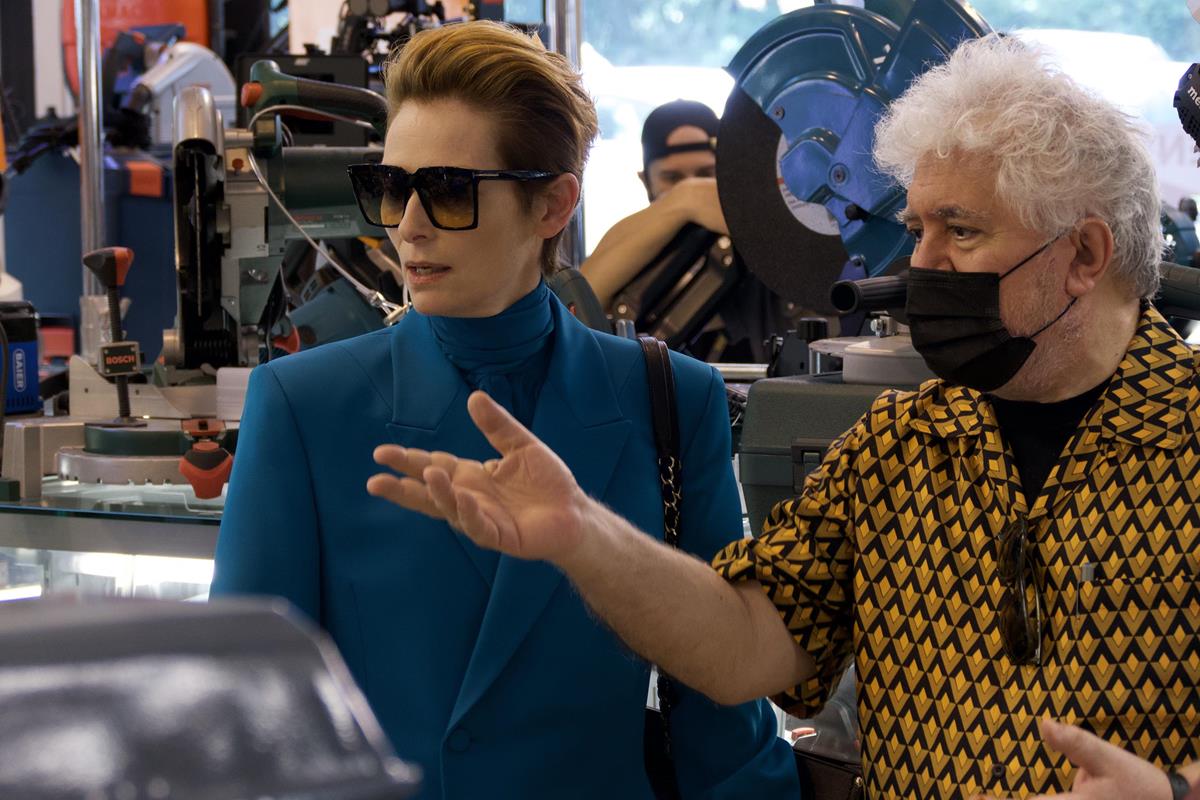
In her review of the film for Vulture, Alison Willmore writes that “The Human Voice is all about the muddied lines between the fabricated and the genuine, and about how much a performance can be divorced from the sincere feelings that might be undergirding it.” Almodóvar highlights the artificiality of the production from the start, she notes:
“…with Swinton in a Balenciaga ball gown wandering morosely around a soundstage that’s soon revealed to contain the apartment in which her unnamed character lives. It’s a gorgeously appointed place, all rich colors and inviting textures and enviable furnishings, the kind of creation that looks like it’s right out of an Almodóvar film, with periodic shots from above or of the plywood exterior to remind us that that’s precisely what it is.”
READ MORE: Pedro Almodóvar’s English-Language Debut The Human Voice Is a Perfect Half-Hour of Film (Vulture)
Rachel Handler, also writing for Vulture, asked Almodóvar when he had decided that the apartment should be revealed as a set. “I always wanted to show what was behind the set — not show the mechanics behind the soundstage or the set as much as the substance, the material it’s all made of: the panels, the structures,” the Spanish director said in the interview. “The theatrical part is her on the set, which is her house, but at the same time, I was showing people where we actually were: We were making it on a soundstage. She’s walking around the soundstage, talking, and you can see that. So it’s not so much theater turned into film, but an organic blend of the two — of theater and cinema.”
From the beginning, Almodóvar was motivated by the idea of showing this woman and her desperation:
“She’s there, she’s alone, she’s in her own house, which is realistic and a naturalist view on the house she’d have, but the idea was all about this woman going out onto her balcony, and there she is, waiting. We’ve already seen her earlier on: She’s absolutely desperate, she changes the clothes she’s wearing all the time. And she goes out onto that balcony, and it’s terrible, isn’t it? There’s no skylight. All she can see is this dirty wall about eight meters away from her window, and that’s the image I had in my head all the time. For me, that image is the absolute categorical picture of what solitude is. The solitude this woman is living in, the absurdity of her life, and the darkness that she’s living in.”
READ MORE: Almodóvar on The Human Voice, a Film Inspired by ‘Desperation’ (Vulture)
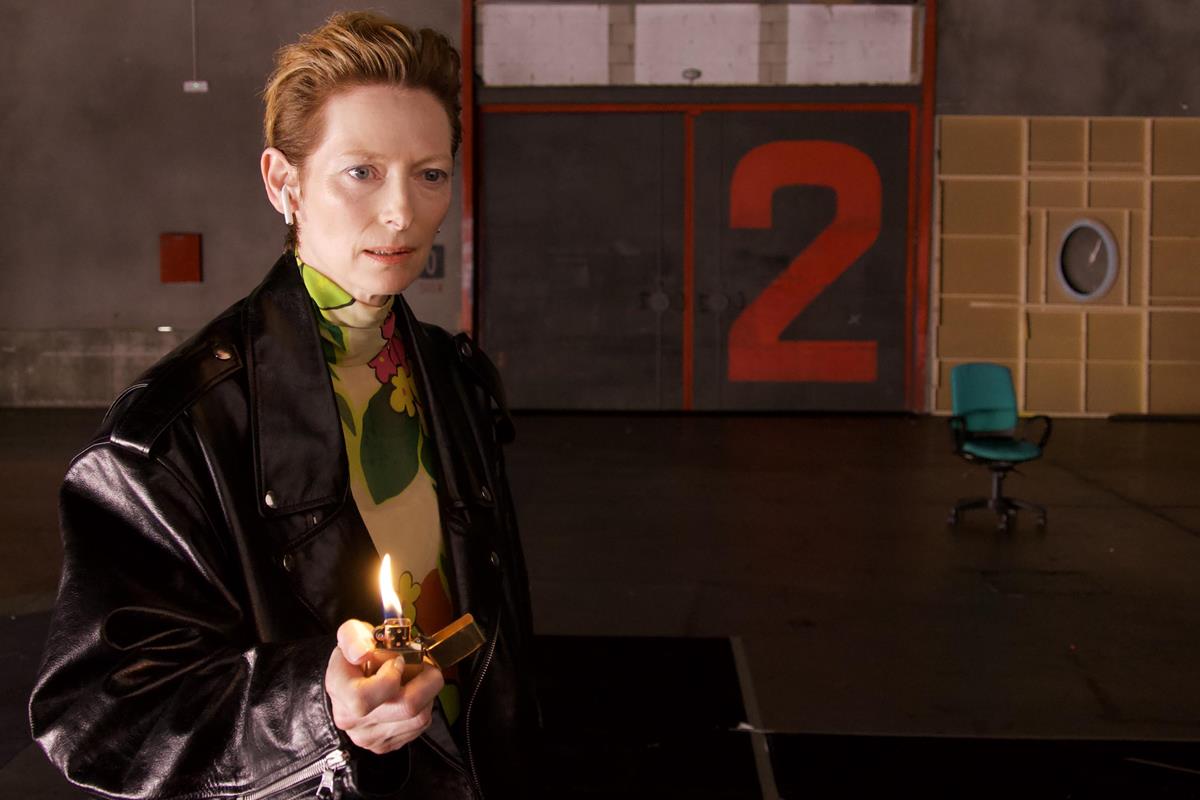
The Human Voice is the third film from Almodóvar to take inspiration from Jean Cocteau’s 1930 stage play of the same name. “The text by Cocteau on which the script of this human voice is freely based is an old acquaintance of mine, which had already served as inspiration for me on other occasions,” he recounts in his director’s statement:
“I tried to adapt it when I started writing Women On the Verge Of A Nervous Breakdown, but what came out was a screwball comedy where the lover didn’t call and, therefore, there was no place for the telephone monologue. A year earlier, I included it in a scene from Law of Desire, where the protagonist is a director who directs his sister in a version of The Human Voice. At that time, I already thought that a character in such a state of nerves was capable of picking up an axe to destroy the house where she had lived with the man who is abandoning her. The idea of the axe came about in Law of Desire. And now it reappears.”
Despite these previous attempts, Almodóvar felt he hadn’t been faithful to Cocteau’s play, which runs between 25 and 30 minutes, he said in an interview with Carlos Aguilar for The Daily Beast. “I wanted to get closer to what this theatrical piece is as literature. With that disposition I sat down to adapt it. In doing that, I discovered something I wasn’t conscious of 30 years ago, which is that I didn’t recognize myself in the character’s submissiveness, with the guilt she carries. In Cocteau’s piece the character constantly blames herself,” he told Aguilar.
Saturated in Almodóvar’s signature color palette, the apartment “even features books and DVDs that almost certainly belong to the artist himself,” Aguilar notes. “This was one of the reasons for making the short,” the director offered. “The first images that came to my mind were of a woman completely alone, isolated in a place waiting for a call. I wanted to mix what’s essentially theatrical which is the interior where she lives, with something essentially cinematic, and I wanted both things to be unified.”
READ MORE: Pedro Almodóvar and Tilda Swinton on Their Pandemic Triumph ‘The Human Voice’ (The Daily Beast)
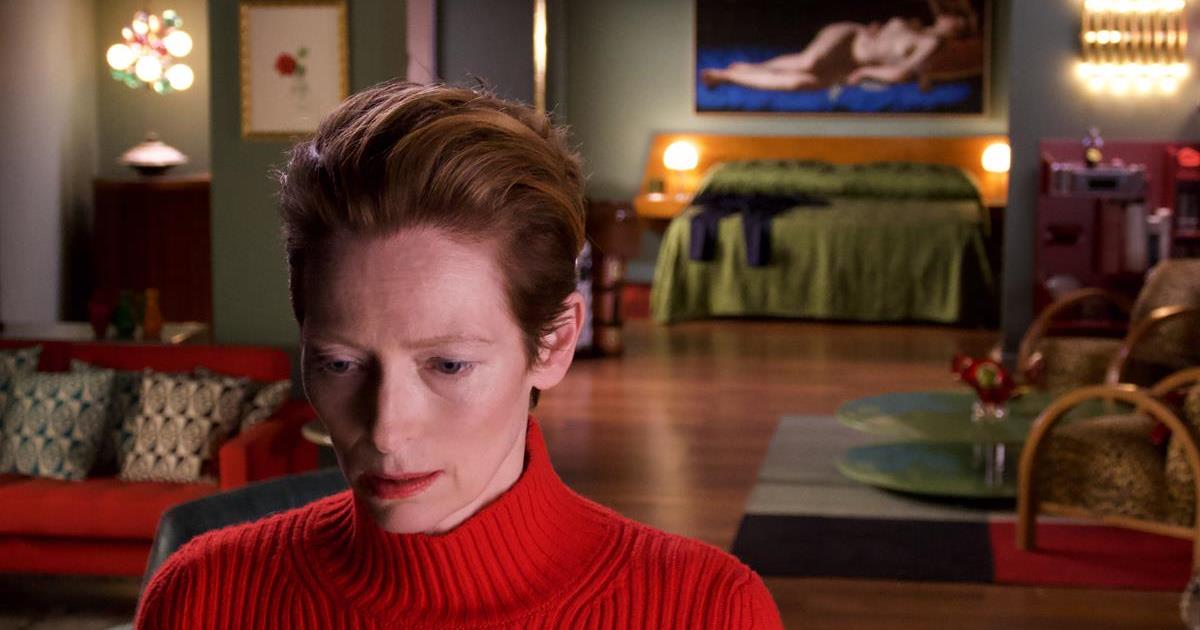
The Human Voice “speaks to our lockdown neuroses: Tilda Swinton indoors, alone and increasingly distraught,” Steve Rose writes in The Guardian. “Like many film-makers, Almodóvar and Swinton were operating under constrained, Covid-proofed conditions. This era will be marked in history by a preponderance of minimal, self-made or skeleton-crewed movies,” he observes.
But by placing the apartment in a stage set, Almodóvar shows that none of its luxurious cultural trappings — haute couture outfits, Chanel bags, paintings by De Chirico and Alberto Vargas, and what looks suspiciously like a designer axe — are real. Reinforcing this idea, Swinton appears to play herself: “The clients love my pallor. That mixture of madness and melancholy,” she says in the film.
“The Human Voice could be seen as Almodóvar embracing the ironies” of the global pandemic, Rose suggests. “The movie is set in the spaces of both the home and the cinema, and asks if there’s still a difference. Fittingly, Swinton resolves things at the climax in her own cathartic, violent, yet tastefully designed way. Hopefully cinema can do something similar.”
READ MORE: Home alone: how Almodóvar’s new film finds innovation in lockdown (The Guardian)
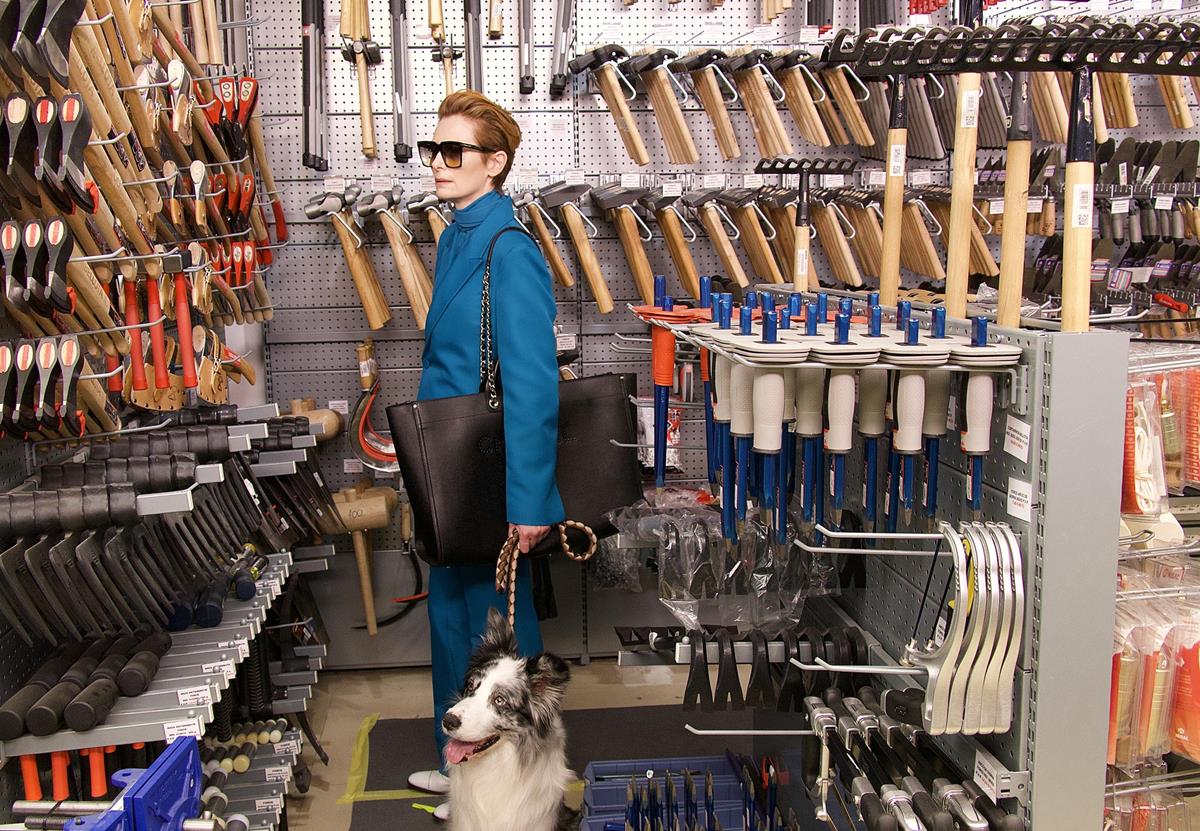
Speaking with Eleanor Stanford in an interview for the New York Times, Swinton calls the opportunity to work with Almodóvar “cathartic,” particularly in the midst of a pandemic. “It was really wonderful to make something in July. That was such a blessing. We were all so happy to work — and to prove to ourselves that we can do it,” she said.
“We’re just going to have to evolve, and we just have to figure it out,” Swinton continues. “We figured it out with this movie: We’re in a studio, we’re with a relatively small crew, it’s entirely controlled, we were constantly tested. And we just did it.”
Swinton described working on set “like having held your breath underwater for a long time,” she said:
“I’m finding the most borderline traumatic things are the things that are similar: If everything was completely different, it might be easier to adapt, but when things are anything like what you recognize from before March, it is confusing, and confusion is very exhausting.
“So after a millisecond of realizing there were going to be crew members I will never recognize without their masks, we just approached shooting a film the way we always would have shot it: A few things are going to change in this new world, and so much more is not going to change.”
READ MORE: Tilda Swinton Has Made the ‘Ultimate Lockdown Film’ (New York Times)
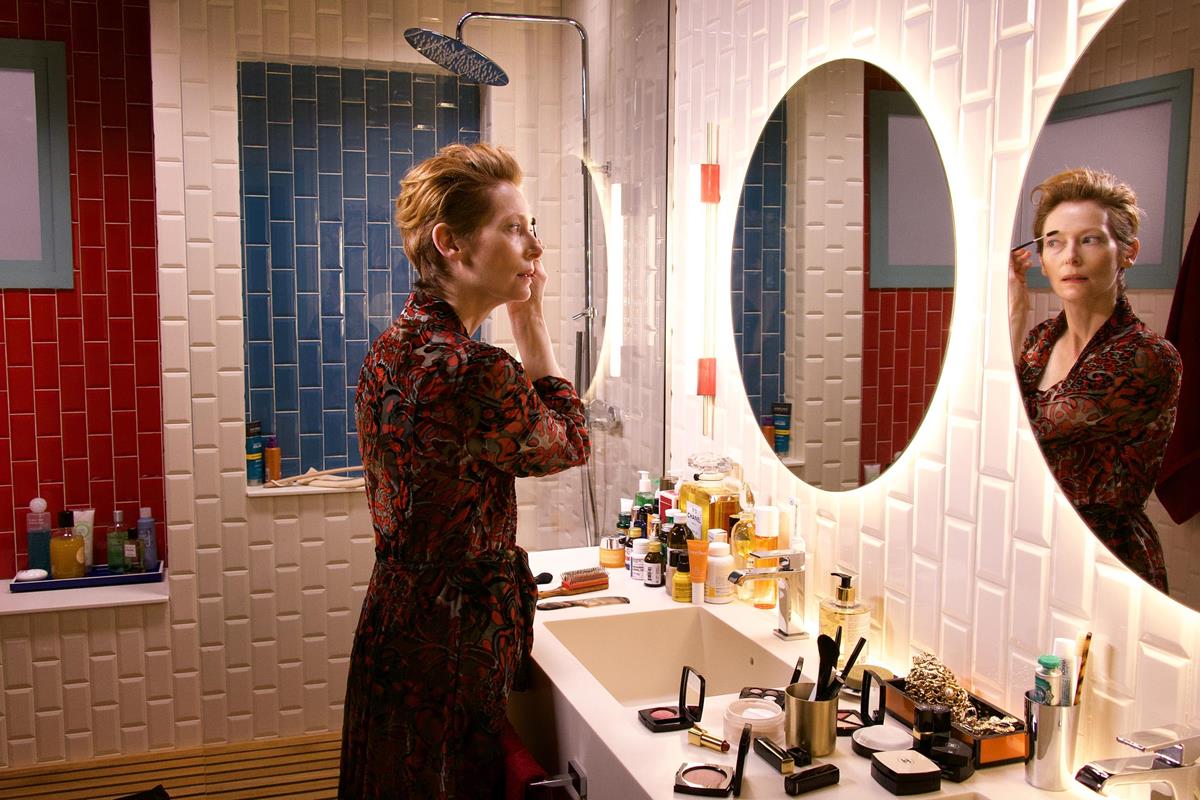
Speaking at a press conference from the Venice Film Festival, where The Human Voice had its world premiere, Almodóvar described his approach to making the film, Nancy Tartaglione reports in Deadline. “Ever since Julieta, I have the impression of palpably entering a new season,” he said. “I am working towards a leaner narrative with fewer elements, but I analyze them very deeply. The experience of sobriety and austerity accompanied me also in Pain And Glory. It’s something new that I’m experiencing in this season of my life and I am trying to investigate it.”
But despite a new content distribution paradigm fueled by the global pandemic, the famed director remains firm in his belief that his films aren’t made for streaming. “Films are made to be seen by any means, but as a director and spectator the fact that a film of mine is show in a theater, that I can hear audience breathe, gives me the pulse of to what extent my film excites people,” he said. “If I put my film on a platform like Netflix, I lose that contact with the spectator.”
READ MORE: Venice: Pedro Almodovar & Tilda Swinton Talk ‘The Human Voice’, “Essential” Role Of Going To The Cinema (Deadline)
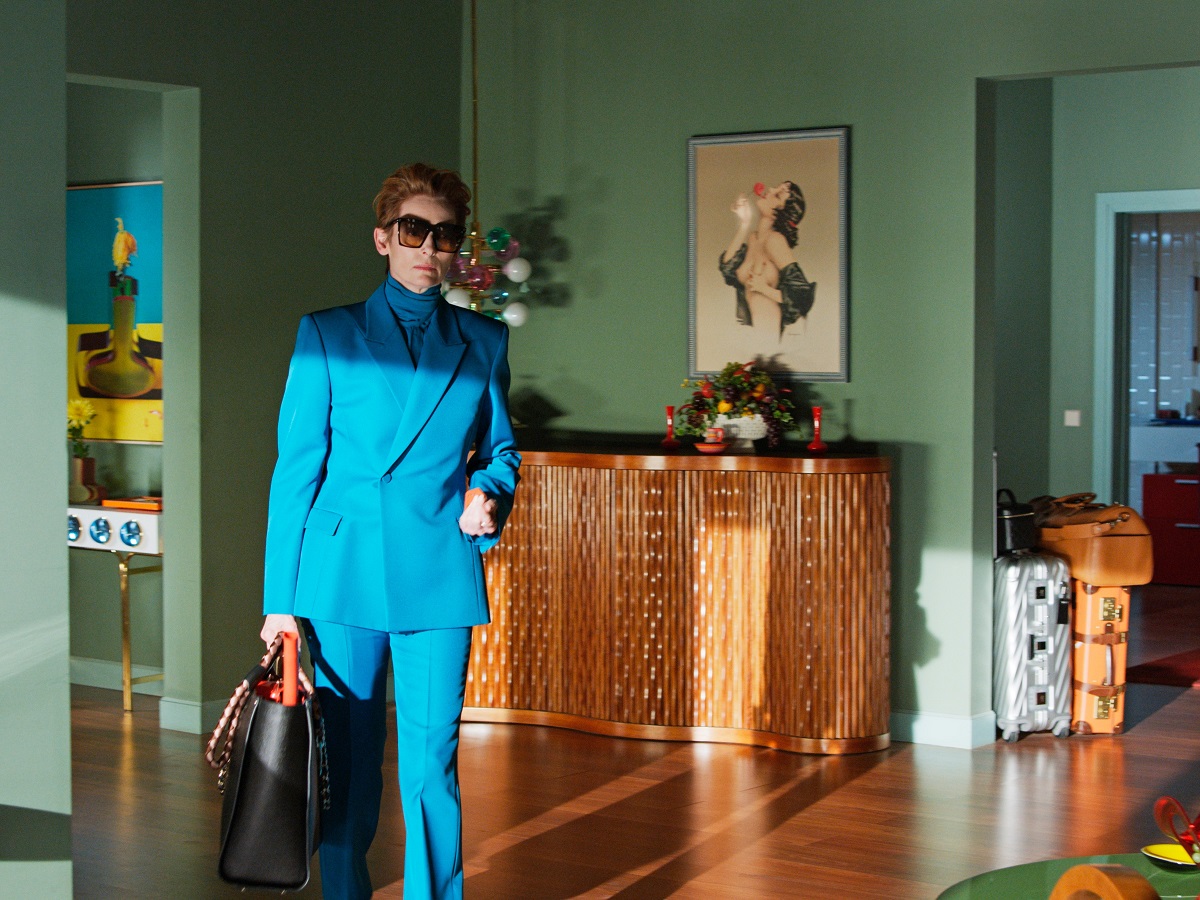
“The truth is I have really enjoyed this experiment,” Almodóvar comments in his director’s statement. “Transforming, for example, an enormous chroma green screen, usually so ugly, into a kind of operatic curtain was stimulating, fun and exciting.
“Despite the fact that it is spoken in English, that The Human Voice is my debut in that language, and that the shoot was absolutely idyllic, I’m not sure that I’m ready to tackle another shoot in English. What I am sure about is that I can direct Tilda Swinton in her native language.”
Want more? Watch the video below, from the 2020 edition of the New York Film Festival, where Almodóvar and Swinton discuss The Human Voice and the perseverance of cinema:


